The sprawling port city of Kaohsiung seldom wins plaudits for its beauty or architectural history. That said, like any other metropolis of its size, it does have a number of strange or striking buildings. This article describes a few such curiosities, all but one of which I stumbled across by accident.
BOMBPROOF HANGARS
Just north of Kaohsiung International Airport, hidden among houses and small apartment buildings that look as though they were built between 15 and 30 years ago, are two mysterious bunker-like structures that date from the airport’s establishment as a Japanese base during World War II.
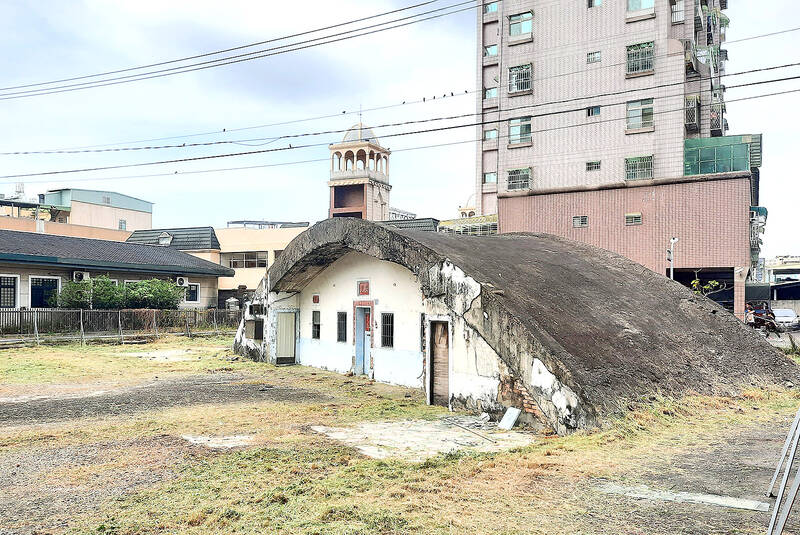
Photo: Steven Crook
Each is just about big enough for a single-propeller small aircraft, and has a curved reinforced-concrete roof at least 70cm thick. Both are currently unoccupied, but they were obviously used as dwellings or storage spaces at some point in the past. The open sides were bricked up, and at least one of the hangars was equipped with air-conditioning. (As many Taiwan residents know, concrete is excellent at soaking up far more of the sun’s heat than you want.)
According to an entry on the Ministry of Culture’s Taiwan Cultural Memory Bank Web site (tcmb.culture.tw), a few more bombproof hangers can be found in the neighborhood immediately south of the airport. The page provides few other details, although it does confirm that people lived in the hangars after 1945 and appreciated their sturdiness.
One of the ex-hangars I came across is best seen from the intersection of Gueicheng Street (桂誠街) and Gueijhong Street (桂忠街). Fencing around the plot — sizable enough that it’s surely drawn the attraction of real-estate developers — stops people from getting close to the bunker.
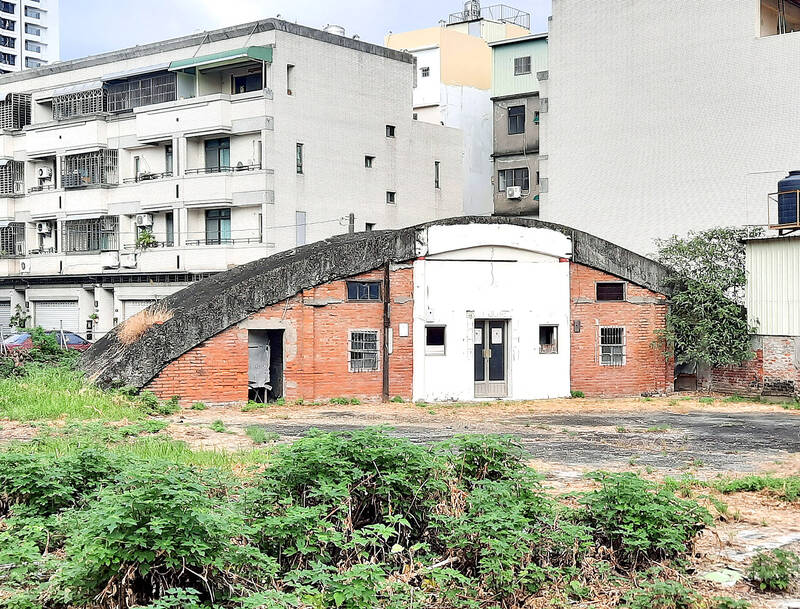
Photo: Steven Crook
The other is slightly less than 200m to the south, where Gueitian Street (桂田街) meets Gueilin Lane (桂林巷). It’s slightly more accessible, if you don’t mind long grass and mud.
Similar hangars can be found in Yilan City and neighboring Yuanshan Township (員山). The Yilan County Government has decided to preserve and promote 14 so-called “kamikaze bunkers,” tying these architectural anomalies to the estimated 250 kamikaze missions that took off from Yilan’s long-gone runway and other Taiwanese airfields during the Battle of Okinawa in 1945.
A MERCHANT’S MANSION
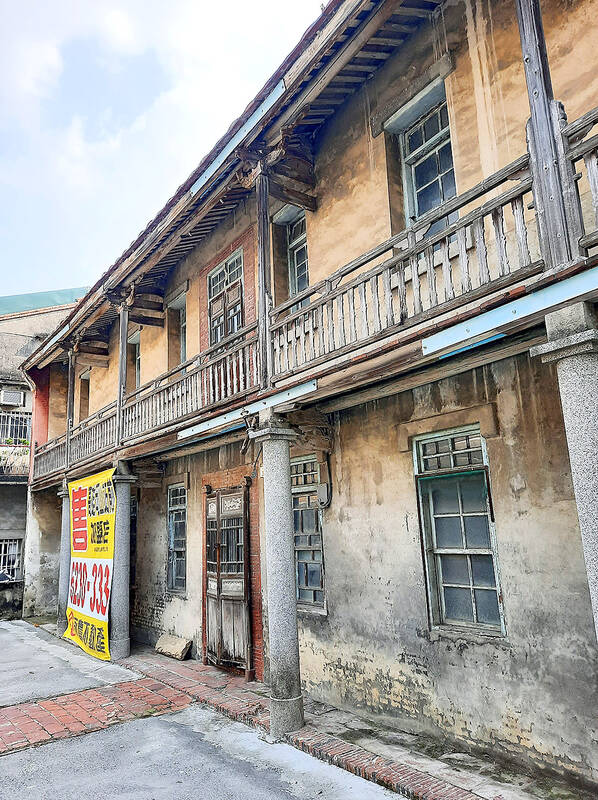
Photo: Steven Crook
Riding home through Lujhu District (路竹區), I noticed an antiquated residence that’s somewhat lower than the surrounding houses, yet far wider and clearly much older.
Taking in the facade of 316 Dashe Road (大社路), I noticed that the first-floor columns are round and concrete, while those on the second floor — which has a narrow verandah — are square and wooden. Just beneath the overhang, there are colorful decorative tiles of the kind preserved in Chiayi’s Museum of Old Taiwan Tiles (台灣花磚博物館). Over the years, the plaster covering the brick walls has taken on a goose yellow hue.
At the time of my visit, the building bore a “for sale” sign. Curious as to the price, I called the number listed on the sale notice. The realtor refused to give me a ballpark figure, saying I should make an appointment to view the building inside and out, then begin negotiations if I liked the place.
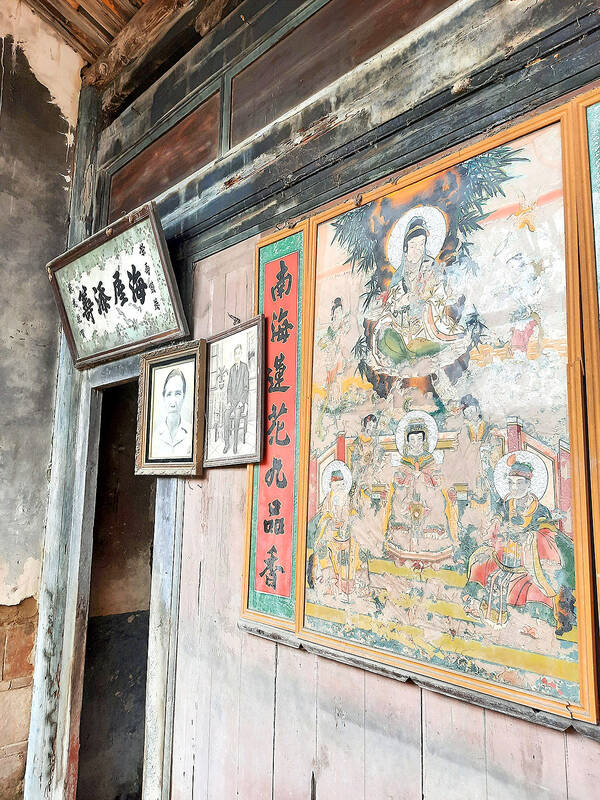
Photo: Steven Crook
As there’s no way I can afford the property, I decided not to waste his time. Even if it doesn’t include the collapsing south-facing sanheyuan (三合院), traditional three-sided building, behind the Western-style mansion, I wouldn’t be surprised if the owners are expecting well over NT$20 million. If it were in a touristy area, say Tainan’s West Central (中西) or Anping (安平) districts, entrepreneurs would be falling over themselves to convert the building into a characterful homestay or fine-dining restaurant.
The main residence, known to locals as the Su Family Old Residence (蘇家古樓), was completed circa 1920 and used mainly by Su Chao-sui (蘇朝燧). Further proving that his family was well heeled, Su traveled all the way to Taipei to complete his education.
If you come here, do walk down Lane 338 of Dashe Road to get glimpses of both the back of the Western-style abode and what remains of the even older dwellings next to it.
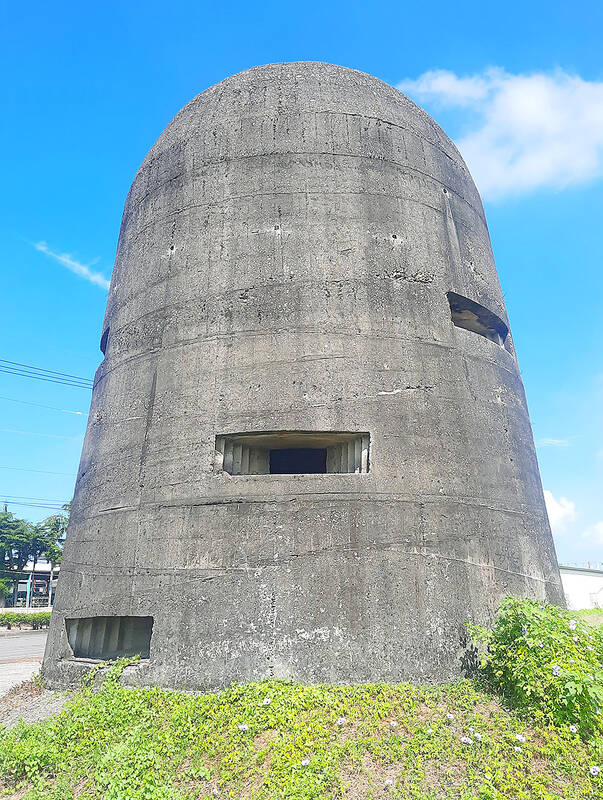
Photo: Steven Crook
INDESTRUCTIBLE YET NEGLECTED
Provincial Highway 17 is one of the major roads connecting Kaohsiung with Tainan. On the eastern side of the highway, about 300m south of Agongdian Creek (阿公店溪), there’s a cone-shaped landmark that I read about on social media.
Constructed by the Japanese military to protect their air base a short distance inland at Gangshan (岡山) — now the site of Taiwan’s air force academy — this gray strongpoint stands about six meters tall. Some sources refer to it as Mituo Japanese Air Defense Tower (彌陀日本軍防空塔), while others call it Mituo Yancheng Anti-aircraft Gun Emplacement (彌陀鹽埕高射機槍砲塔).
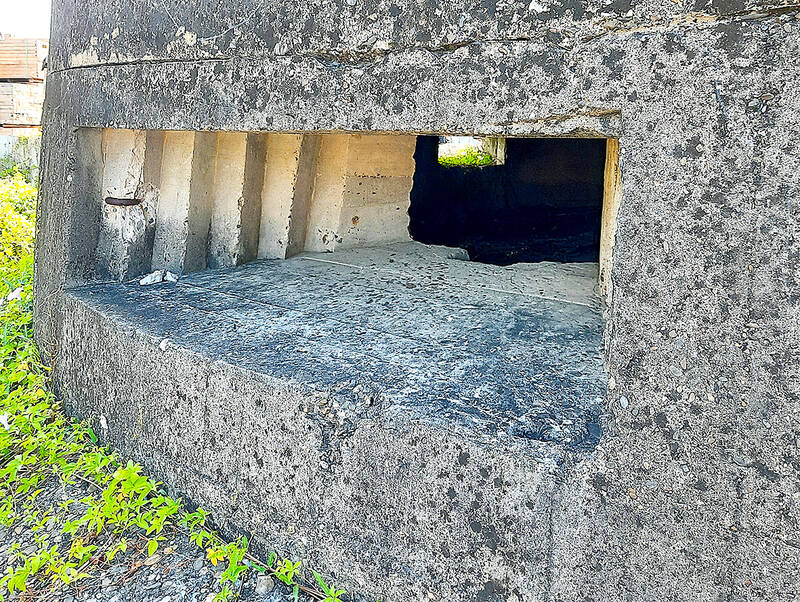
Photo: Steven Crook
According to a blogger who got inside the structure, the concrete walls are about 80cm thick. The nine embrasures on the sides of the tower would have enabled those inside to shoot at land-based attackers approaching from any direction. It’s not visible from street level, but the cone isn’t closed at the very top, so whatever weapon was installed there could fire at enemy aircraft as they flew overhead.
Close to the emplacement there’s a grave for a person surnamed Chen (陳), but who now owns the structure and the land it stands on is something of a mystery. Nothing at the site links it with the Ministry of National Defense or another government entity. There’s no information board or sign, not even a warning that the underground entrance (on the southeastern side of the tower) is semi-hidden amid the foliage and dangerously steep. When I visited, it appeared to be filled with mud and water, so I didn’t attempt to get inside the bunker.
Since 1945, there have been persistent rumors that the surrendering Japanese buried gold at various locations in Taiwan rather than surrender it to the incoming Chinese Nationalist (KMT) administration. This scuttlebutt inspired some people to dig up the ground around the fortification in Mituo. If they found anything valuable, they and their descendants managed to keep it a secret. And at least they didn’t seem to damage this relic in the process.

That US assistance was a model for Taiwan’s spectacular development success was early recognized by policymakers and analysts. In a report to the US Congress for the fiscal year 1962, former President John F. Kennedy noted Taiwan’s “rapid economic growth,” was “producing a substantial net gain in living.” Kennedy had a stake in Taiwan’s achievements and the US’ official development assistance (ODA) in general: In September 1961, his entreaty to make the 1960s a “decade of development,” and an accompanying proposal for dedicated legislation to this end, had been formalized by congressional passage of the Foreign Assistance Act. Two

Despite the intense sunshine, we were hardly breaking a sweat as we cruised along the flat, dedicated bike lane, well protected from the heat by a canopy of trees. The electric assist on the bikes likely made a difference, too. Far removed from the bustle and noise of the Taichung traffic, we admired the serene rural scenery, making our way over rivers, alongside rice paddies and through pear orchards. Our route for the day covered two bike paths that connect in Fengyuan District (豐原) and are best done together. The Hou-Feng Bike Path (后豐鐵馬道) runs southward from Houli District (后里) while the

March 31 to April 6 On May 13, 1950, National Taiwan University Hospital otolaryngologist Su You-peng (蘇友鵬) was summoned to the director’s office. He thought someone had complained about him practicing the violin at night, but when he entered the room, he knew something was terribly wrong. He saw several burly men who appeared to be government secret agents, and three other resident doctors: internist Hsu Chiang (許強), dermatologist Hu Pao-chen (胡寶珍) and ophthalmologist Hu Hsin-lin (胡鑫麟). They were handcuffed, herded onto two jeeps and taken to the Secrecy Bureau (保密局) for questioning. Su was still in his doctor’s robes at

Mirror mirror on the wall, what’s the fairest Disney live-action remake of them all? Wait, mirror. Hold on a second. Maybe choosing from the likes of Alice in Wonderland (2010), Mulan (2020) and The Lion King (2019) isn’t such a good idea. Mirror, on second thought, what’s on Netflix? Even the most devoted fans would have to acknowledge that these have not been the most illustrious illustrations of Disney magic. At their best (Pete’s Dragon? Cinderella?) they breathe life into old classics that could use a little updating. At their worst, well, blue Will Smith. Given the rapacious rate of remakes in modern